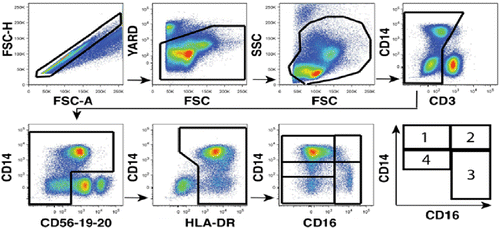Figures & data
Figure 1 Multiparametric flow cytometry gating strategy to phenotype four distinct monocyte sub-populations from peripheral blood based on CD16 and CD14 expression: (1) classical monocytes lacking CD16 expression (CD14++CD16-) and those expressing CD16 comprised (2) intermediate (CD14++CD16+) and (3) non-classical (CD14low/+CD16++) monocytes. A fourth MO subset which we have termed (4) “transitional” monocyte subset is characterized by reduced but still detectable levels of CD14 (CD14 + CD16-).

